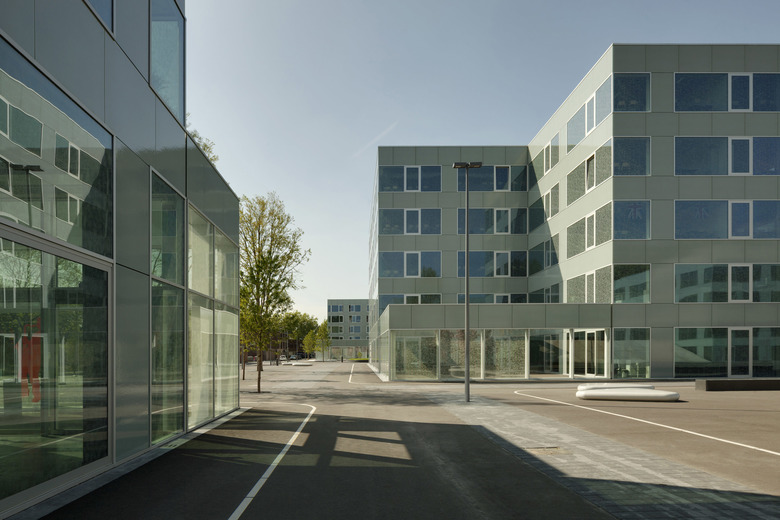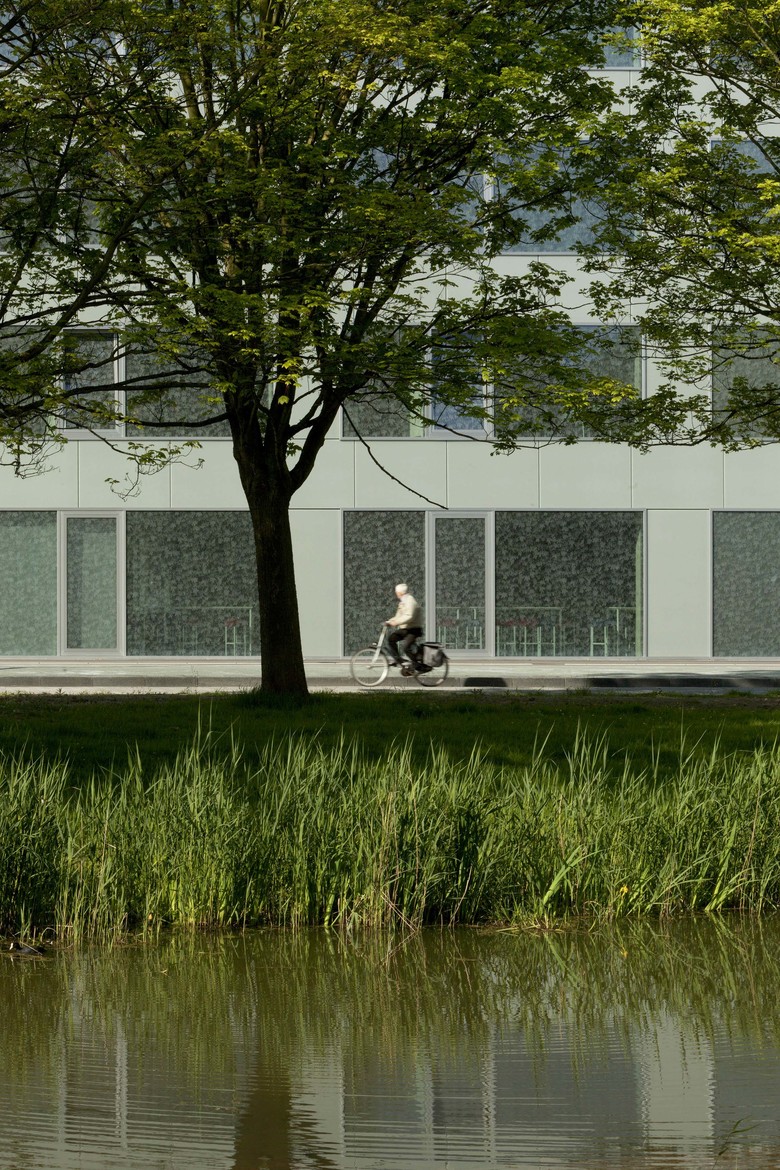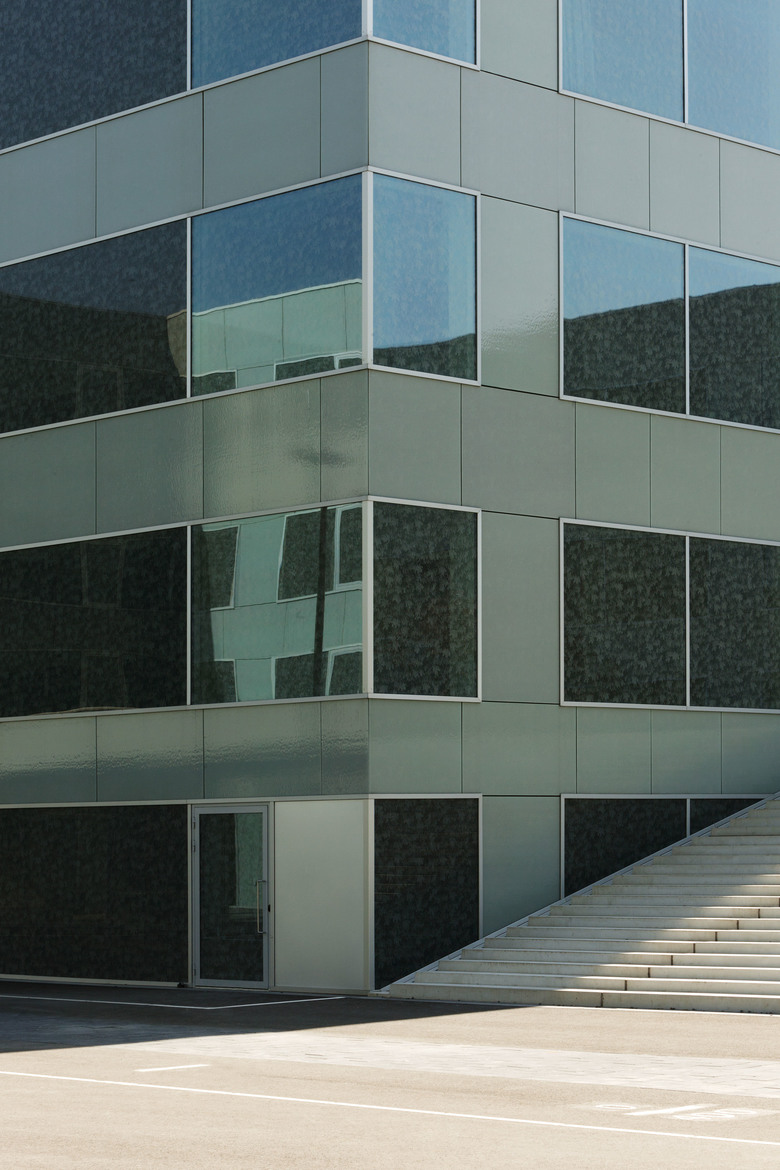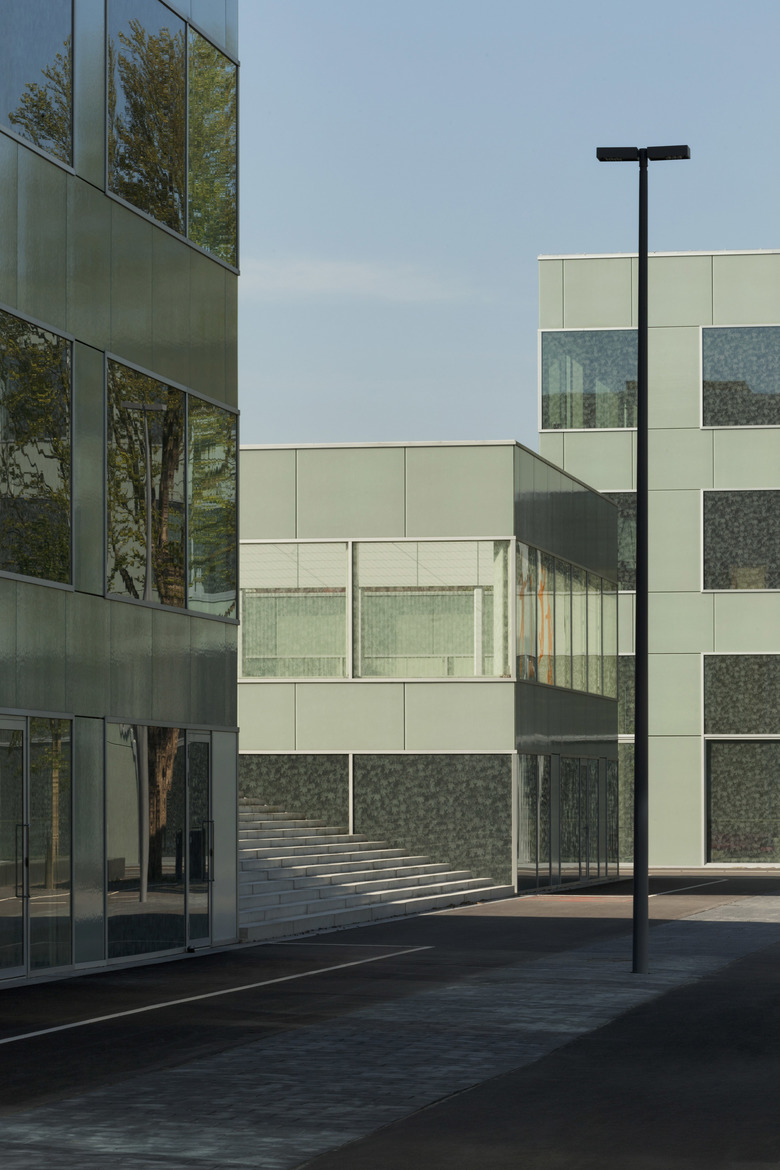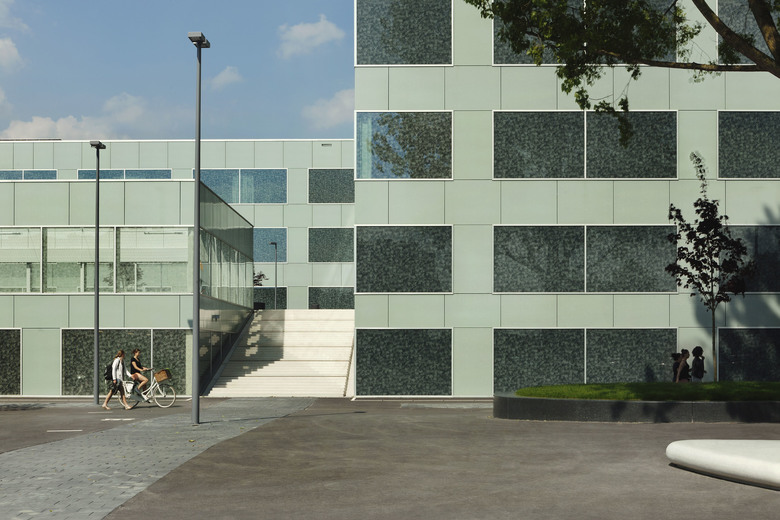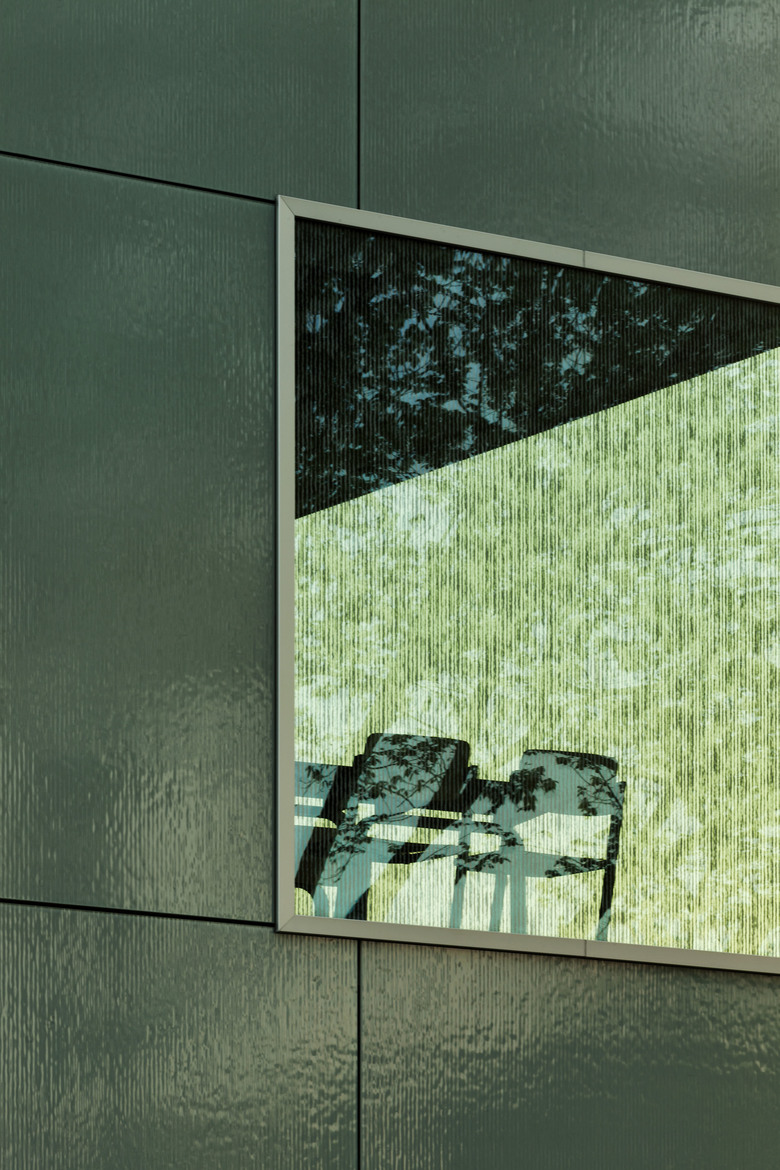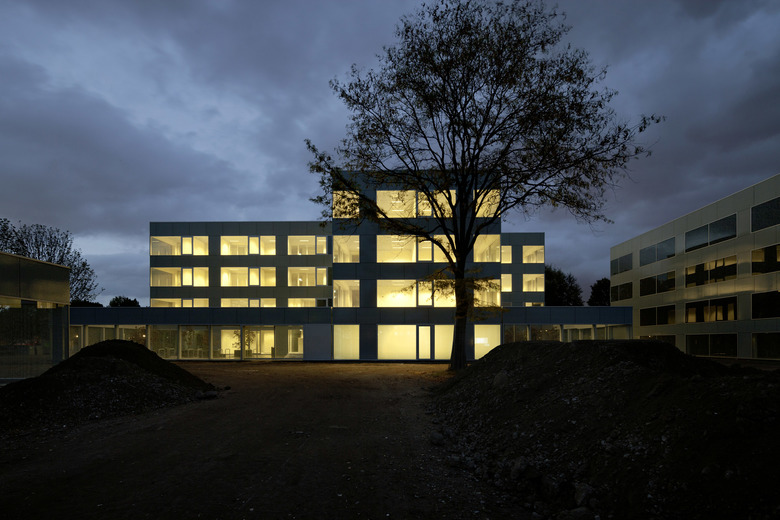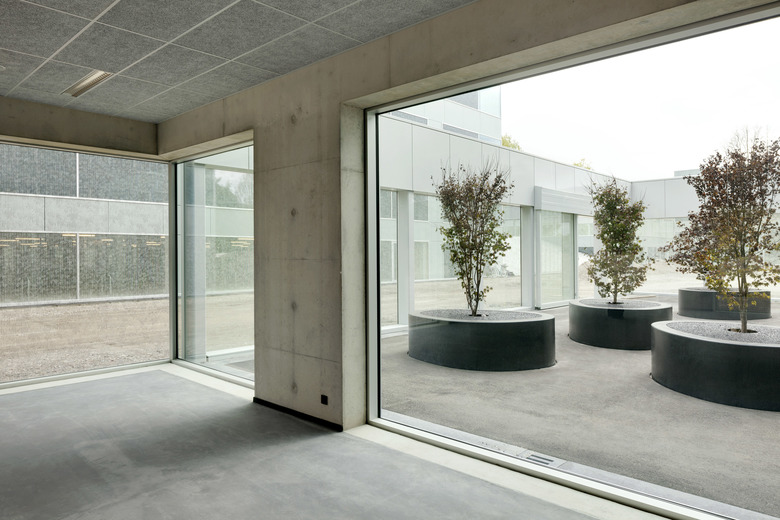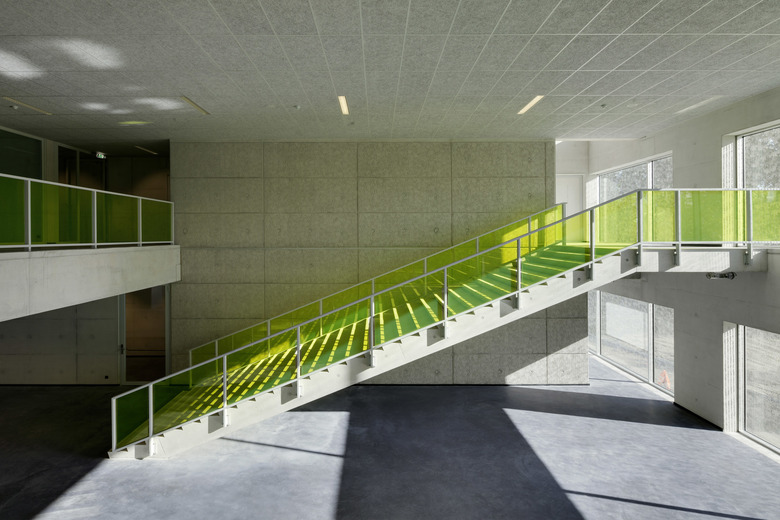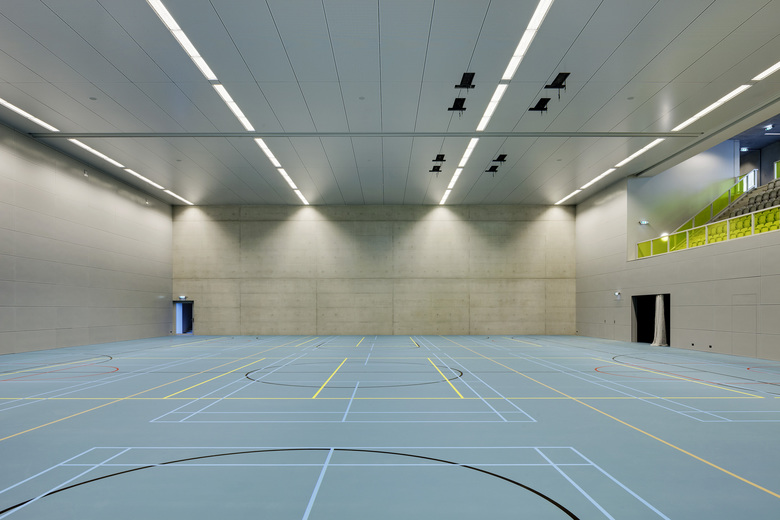Campus Hooglviet
Campus Hoogvliet is a cluster of six buildings that together compose one academic and socially focused campus, located just outside of Rotterdam. These six new buildings–a sports center, an art studio, a safety academy, 100 residential units within one building, and two schools–have been plugged into a programmed tarmac that communicates the campus' boundary, and includes custom designed seating, a running track, and other place-making denotations. The campus’ immediate surroundings are characterized by mid-twentieth century housing developments–which were prolifically constructed during its booming period of post-WWII growth–and the campus aims to rectify the social and cultural deterioration that coupled the demolition of this once historic village.
A glass ‘fence’–equal in height to each ground floor façade–surrounds every building. Every fence is fritted with an abstracted, pixilated image of ivy, so as to create an exterior terrace that is both private and transparent. The ground floors of each building are fritted with the same pattern, and all exterior glass was made with kiss print, which introduces texture to each façade. A white ring surrounds every building and denotes the transition from public tarmac to private terrace, each programmed with bike parking and play areas. All six buildings share a similar procession of entry: spaces compress in volume when transitioning from the campus’ tarmac toward the glass-fenced terraces; decompress when entering each building’s ground floor communal spaces; and compress again when traversing circulation paths toward upper levels.
The sports center’s tribune seats 300 and overlooks its multi-purpose and double height activity space, which functions as an exercise area for students and is also available for local events and sports teams. This sports center–the largest of the campus’ six buildings–has been raised one level in order to accommodate a 80 space parking garage on its ground floor; this introduces a ‘zero-zero’ level to the campus, which compounds the notion of ‘interiority’. Additional parking for 200 aligns with and compliments the campus’s boundary, so as to not disturb its highly trafficked pedestrian areas. An outdoor basketball court occupies the roof of the sports center’s ground floor; it is perpendicular to a monumental staircase that allows for views over the sprawling campus below.
Load-bearing façades with open corners–combined with concrete cores for stability, and non-polished concrete floor slabs under tension–structure each building. Cores are notable for their concrete relief, derived from an enlarged pattern of the fritted ivy, adjacent to which are each building’s shifting sets of staircases. Balustrades are finished with colored glass, and each building has a unique color, to impart a visual identity within each. Custom-designed white terrazzo seating dots the campus’ programmed tarmac, and Japanese Maples set in custom-designed black terrazzo planters dot each fenced terrace. The entirety of the programmed tarmac, and every terrace, are illuminated at night to ensure the surrounding community’s cohesiveness. Unity defines the campus–and its clustered buildings–which are therefore experienced as continuous architecture.
